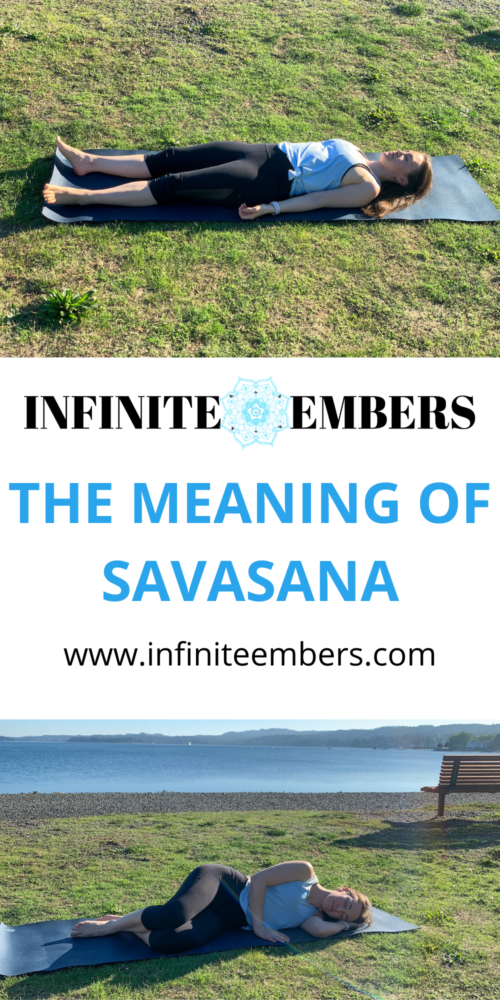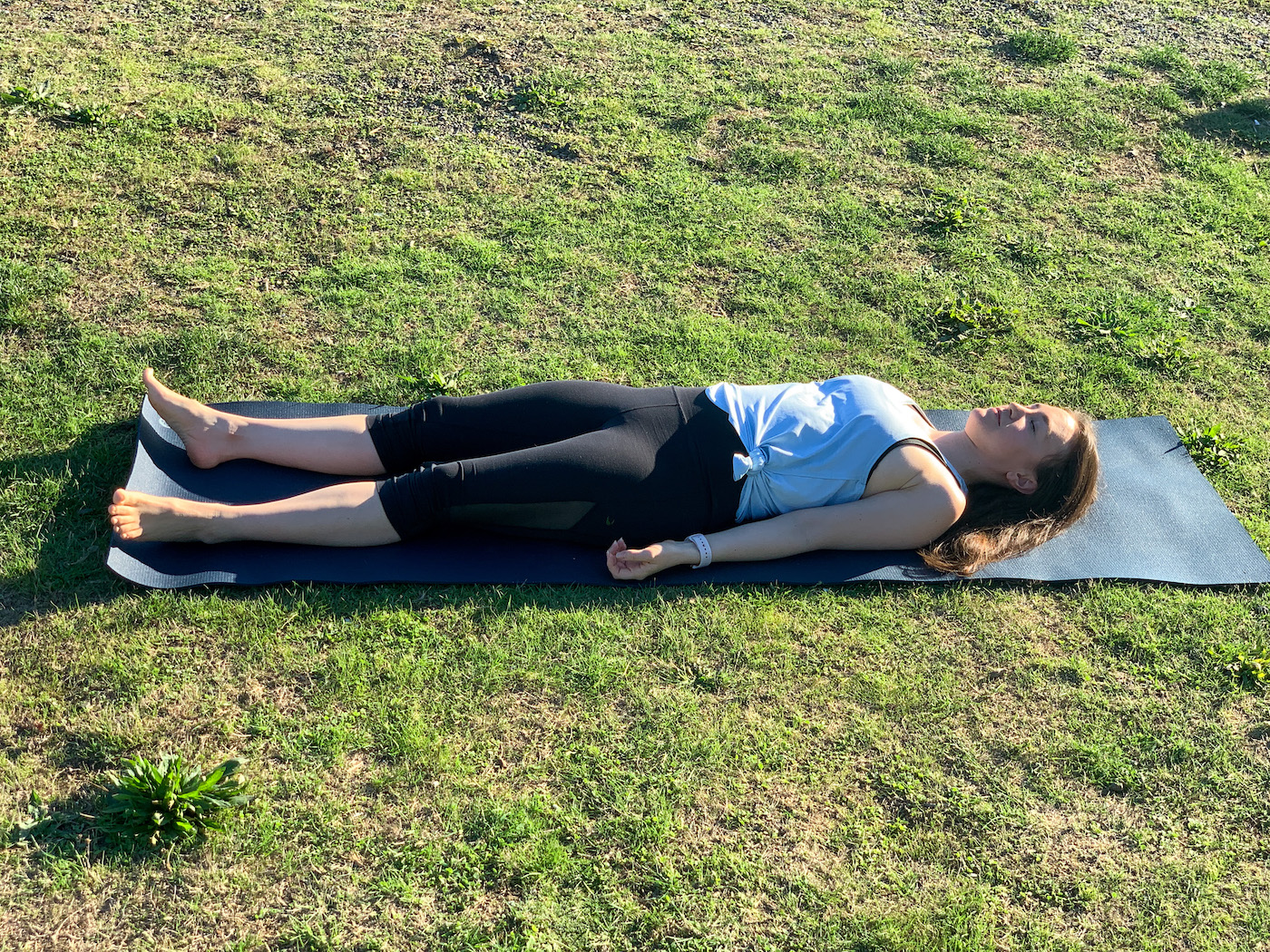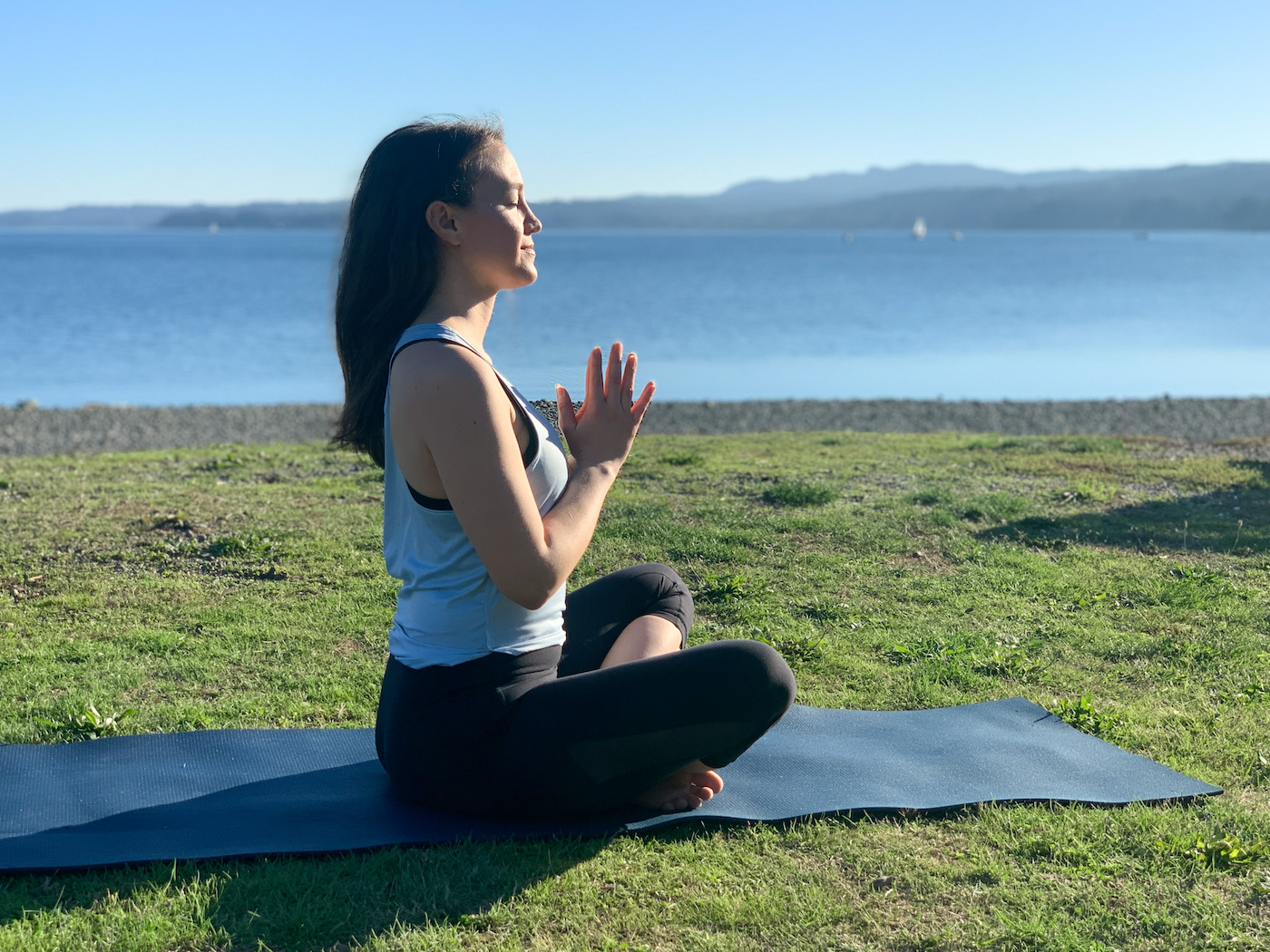Savasana is arguably the best part of yoga class.
There are tank tops that say “I’m Just Here For Savasana.” Memes on Instagram featuring puppies lying on their backs. I’ve even found yoga mats dedicated to the pose. It’s widely loved, but what exactly is Savasana, and what is its meaning? Let’s dive in!
If you’re newer to yoga, Savasana (which is Sanskrit and translates to “Corpse Pose”) is a position where you lay down in a supine position (on your back) and chill. It’s traditionally put at the end of the yoga practice as a time of rest.
I’ve always been a fan of Savasana, but a lot of people do resist it! I’m a yoga teacher, and while I’ve never really seen this in my classes, I hear it’s common for students to leave class early to skip Savasana and get on with their day.
If that’s you—I feel ya! I get it. We live in such a fast-paced world, with endless responsibilities and problems piling up on our shoulders. I remember how it feels to think you can’t afford to take even a few minutes’ break.
But that’s exactly why we NEED Savasana.
Savasana is probably the most important pose in any physical yoga (asana — which means “pose”) practice. For real. It’s an essential part of what makes yoga effective.
The physical asana practice is only one of 8 branches (“limbs”) of Yoga. The reason why we do those poses is to work out our bodies, yes, but that’s just the start. The real point is to prepare.
Movement is just the warm-up to the actual aim of yoga: to improve our ability to meditate and self-actualize in our minds.
You may have noticed this—it’s WAY easier to meditate after moving your body! When you work out your body, you calm pathways of stress and anxiety in the brain thanks to all the good chemicals the movement produces. This helps you to relax, if you let it.
And once you relax, you can meditate deeper. You can calm your mind. You can find stillness.
That’s Savasana!
It’s essentially a pose dedicated to strengthening the mind.
Think of your Savasana time as a mini meditation. During this time your mind draws from all the openness you’ve created in your body through your yoga practice. Your brain sees that the body is more relaxed, and chemically mirrors that and also starts to slow.
When you’re in Savasana, the goal is to surrender.
You want to be as comfortable as possible. Let your body relax and become heavy (use cushions, blankets, or bolsters to support you if needed). Have your feet hips-width distance apart, arms alongside your body, palms up.
Close your eyes, and let them become heavy too. Try to let go of any tension in your body. Breathe deeply.
Just be.
That’s not to say this is easy—like I mentioned above, many of us actually really struggle with slowing down. It’s important to recognize that’s normal, and that over time it will get easier and easier to really relax while in Savansa.
This will allow you to get the full benefits of the pose.
On a purely physical level, Savasana is also critically important for muscle recovery.
Savasana’s not just good for the mind and soul—it’s also an important part of your physical recovery after a yoga practice. This is even more true the more you challenge yourself in class in terms of strength and stamina.
When we exercise, which yoga certainly can be (it all depends on what type of practice you do), we bring our bodies into a Flight or Fight response, activating our Sympathetic nervous system. Our bodies create the stress hormones adrenaline and cortisol. In the case of intentional movement, this a good thing. It’s how we build our muscles and train our bodies to become stronger.
But your body also needs to go back into a Rest + Restore response, activating the Parasympathetic nervous system, in order for that rebuilding to actually occur. In the stress mode, we break muscle tissue down and pause all non-essential bodily functions. The rest mode is when the rebuilding and strengthening actually occur, as well as healing and balance as the bodies’ systems come back online.
Our lives are full of stress, which means our Sympathetic nervous system is almost always on. That’s why it’s even more important now than ever to make sure we get plenty of Savasana in our yoga practices.
The ritual of ending class in Savasana symbolizes rebirth.
Many yoga traditions (and there are lots of different types of yoga) come out of Savasana the same way. We return to movement slowly, starting by adding small movements, maybe wiggling your fingers and toes. Then we transition from Corpse Pose to lying on one side, pausing for a moment to honor the earth supporting us. We end by pressing up to a seated position, ready to start our day anew.
Our practice ends with a death (Corpse Pose), and in that death we can shed layers of ourselves we no longer need. We can let go of a thought that’s hurting us, a belief that’s been holding us back, an old way of being.
We let ourselves start over, and we leave the mat freer than we were before.
That’s the huge message of hope underlying our yoga practice, and it’s helpful to remember the meaning of Savasana as you come out of it.
This is your chance to start over. The past is in the past. You are here, now. And you can change and grow however you want and need, by releasing what no longer serves you.
The longer the Savasana, the better.
In my yoga teacher training, I was taught by my guru Elka Haeckel about the importance of Savasana, and that as teachers we needed to make sure to allow for at least 10 minutes of it in our traditional 60 minuted classes.
But I have taken so many classes where Savasana was all but forgotten—maybe a minute, max, at the end of a packed class. Have you encountered that, too? I know we all want to get the most out of the hour as possible, but Savasana is just as important, if not more important, as the rest of the practice.
My fellow yoga teachers, let’s please start to make sure we’re placing the importance on Savasana that it deserves. Longer class times (75-90 minutes) gives us more room to explore the pose more deeply. If you can, allowing for 10-30 minutes of Savasana meditation at the end is incredible. This gives the students enough time to really dive into a meditative state.
But even if it’s just 5 minutes, or even 1—make sure you do Savasana!
Savasana allows you to fully reap the benefits of your yoga practice.
You’ll get the most out of your practice by committing extra attention to this final, and oh-so-important pose. Your body will absorb all the benefits of your physical workout, and your mind will get a chance to find peace.
By devoting time to this calm, meditative asana, you’ll experience these benefits:
- reduced stress and anxiety, long-term
- improved mental focus
- improved feelings of calm and wellbeing
- reduced blood pressure
- increased immunity
- improved lung function
- ability to stay more present and mindful
In our constantly active and overstimulated world, Savasana is more important than ever.
Plus, it’s the perfect motivation to keep you committed to returning to your yoga mat day after day—all the hard work is worth it for the Savasana!
» Song Vibes «
Are you a fan or Savasana? I’d love to hear what you think in the Disqus Comments section below!
xo,
Amy
This post is not sponsored, but it does contain affiliate links. I truly love these products and know you will, too. Thanks for supporting the blog!
Photos by Matthew Hanley, edits by me





